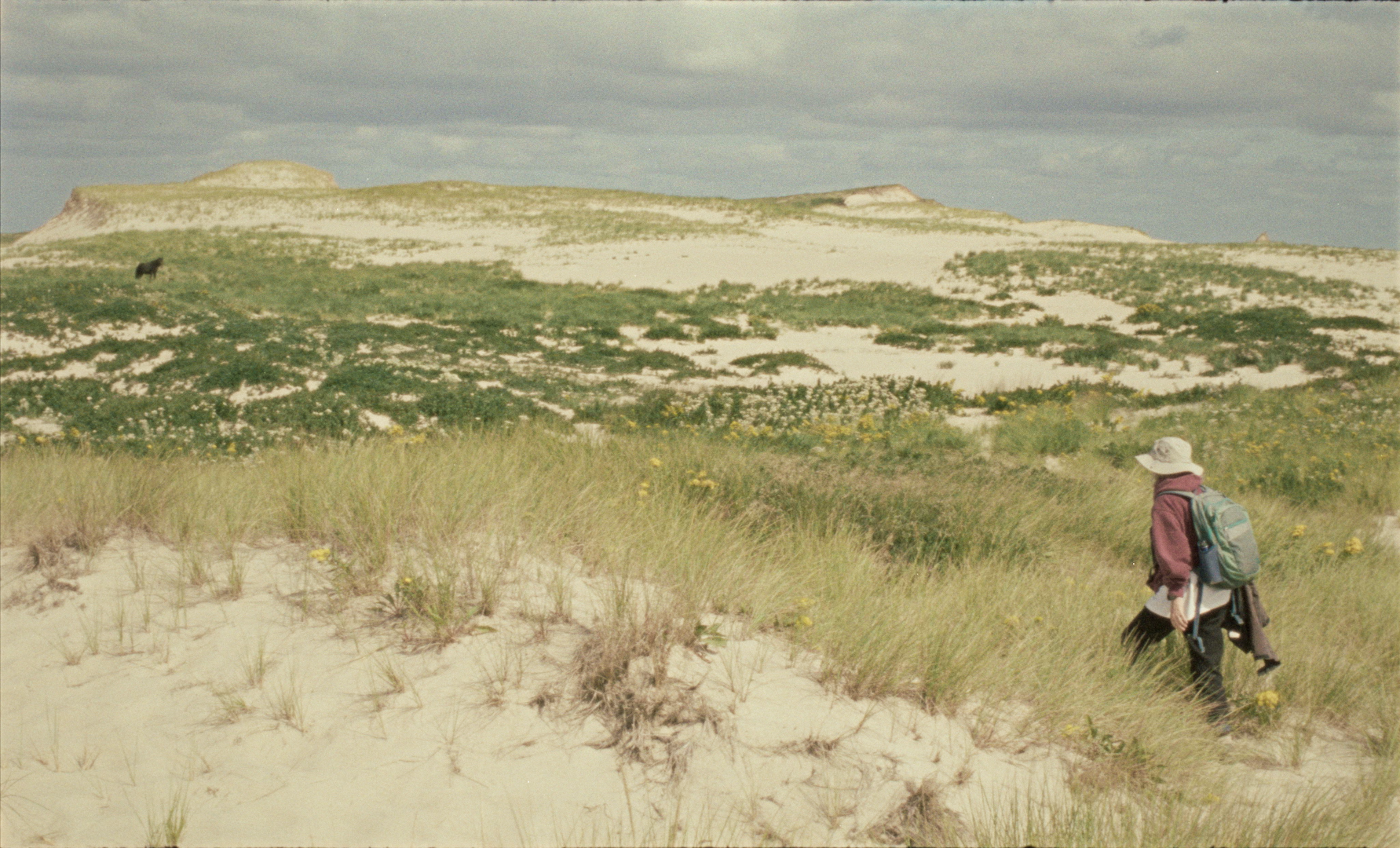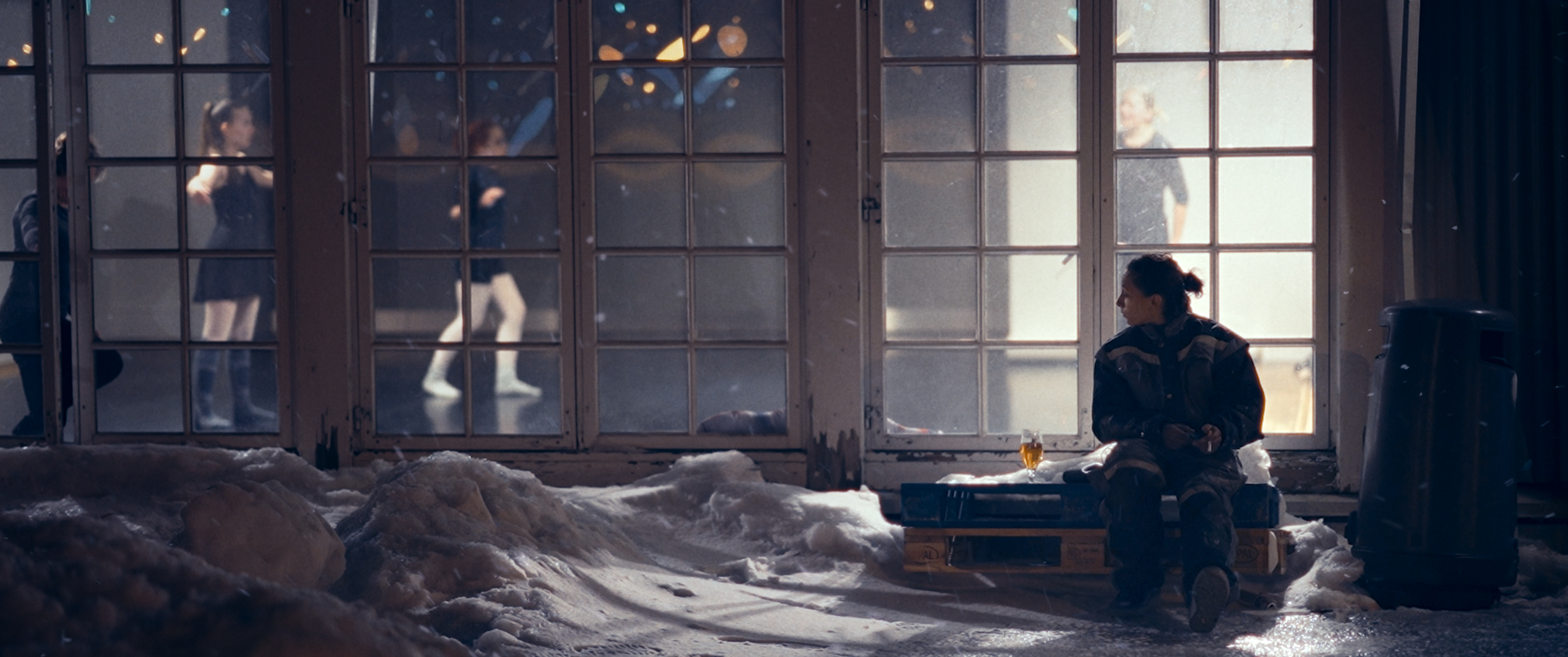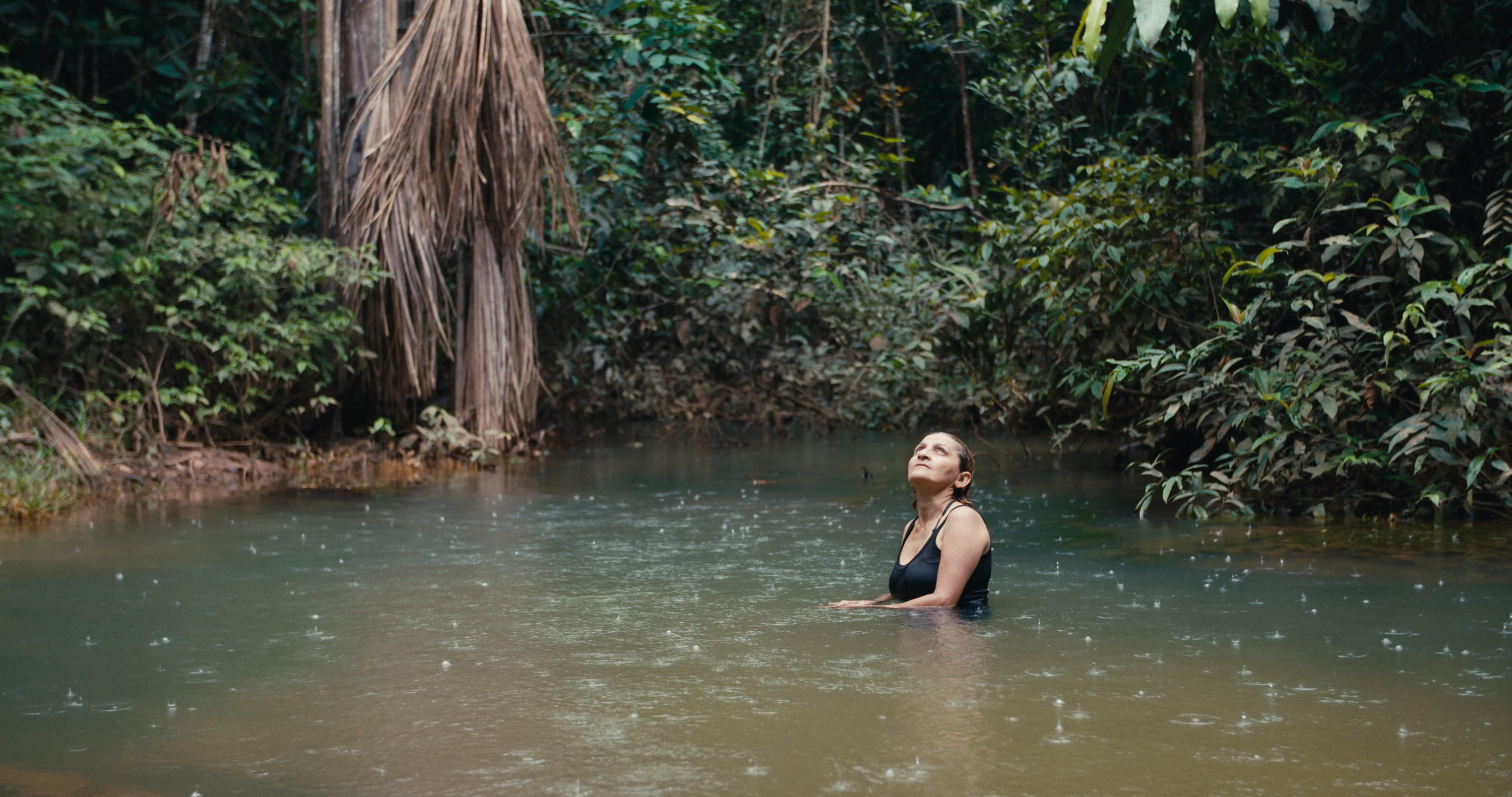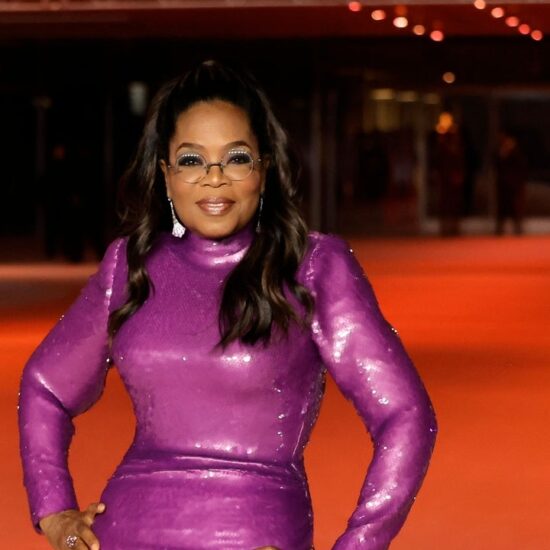
“Who is telling what story, from what perspective, using what form, through what gatekeepers?” This four-part question, posed by Chi-hui Yang of the Ford Foundation during his 2018 Keynote at the Getting Real conference, continues to influence how several film festivals approach their programming. It was especially taken to heart and elaborated upon by the Camden International Film Festival (running from September 15-18 in-person; September 15-25 online) team, and this year’s edition is perhaps strong evidence of how deeply they have integrated the questions into their process: The 2022 hybrid in-person/virtual program features the most international and POC directors the festival has ever had. This was not the conscious result of a new diversity quota, but the latent result of the diversification, culturally and professionally, of their programming team. Joining senior programmer Milton Guillén this year are documentarians Zaina Bsesio and Zara Meerza, programmers of both CIFF films and artist programs, in keeping with the organization’s commitment to a holistic rather than siloed curation. Bseiso has focused on experimental nonfiction filmmaking, for which she has traversed Egypt, Palestine, Cuba and the US; and Meerza, in addition to being a documentarian, comes from a background in distribution and acquisitions at companies like HBO, BBC, Conde Nast, etc. Guillén, the senior programmer, is also a filmmaker, giving further credence to CIFF’s commitment to being a “filmmaker-first festival.” Naturally, each of them pulled films for consideration from different places.
CIFF is one of a handful of regional festivals that gives back to filmmakers and audiences in its own community—in this case, Rockland,. Rockport and Camden., Maine—in addition to importing films, industry executives and mentors with the local and CIFF communities in mind. As CIFF continues to help filmmakers grow, its artist programs and audiences grow. And the works resulting from this monetary, mentorship and/or network support eventually cycle back into the festival. With this sustainable ecosystem, it’s not hard to understand why CIFF seems to grow exponentially every year.
Ahead of the 2022 festival, I spoke with CIFF’s programming team, as well as Executive and Artistic Director/Founder Ben Fowlie and Program Director Sean Flynn, about this ecosystem, and how their evaluation and curation process across the board evolves as the festival gains more and more power to jumpstart careers.
A final note: I appreciate that Fowlie acknowledges, in the midst of much to celebrate, that CIFF can do even better by continuing to evolve structurally. It is no small feat that 60% of the program features BIPOC directors. But every community that falls under that wide umbrella—BIPOC—still remains a minority presence when not lumped together;most “BIPOC-majority” film programs are still disproportionately white. And many curatorial approaches still drain themselves trying to mend the schism made by the imaginary idea of taking art “on its own terms.” Is this not the same denial required of the ruling class to consume without guilt? What should be one whole conversation is still being split into two—the holistic evaluation of a film’s form and its impact, and the evaluation of just form. What does it actually mean to take a film on its own terms and ignore how it impacts an audience in a given context? Who gets to create a pretend world to enjoy just the shiny surface of a cultural object? And when does the film play within this space ostensibly isolated from the world, so often discussed and imagined that it almost seems to have physically manifested somewhere in the middle of a desert, and inside a cinema?

DOCUMENTARY: What is CIFF’s general programming approach, and how is this year’s program distinct from others?
MILTON GUILLEN: This is the most international program we’ve ever had. It’s majority POC directors and co-directors. And a lot of that has to do with this new team and dynamic we’ve created for ourselves. The process this year has been slightly different in that we push and pull from new spaces, which has solidified the idea that this festival has a place for everyone, including some of the most formally adventurous kinds of nonfiction work as well as works that may be speaking to larger crowds and/or competing for big awards.
ZARA MEERZA: I would also add that those things Milton identified naturally arose in the programming process. It wasn’t as if we set out with these specific themes that we wanted to identify or curate to or around. We had a conversation early on about whether that was something we wanted to do in terms of identifying things, and we agreed on a much more organic process. We all come from very different places and we are all also filmmakers who practice very differently, so I think that already informed our process and the communities that we tapped into to find the films that we have this year.
ZAINA BSEISO: One thing I appreciated about the programming process this year was that it wasn’t retroactive. We didn’t think about the fact that it was all POC until after we finished the program. It’s [the result of] how we initially positioned things, so it was more of an integrated effort into how we started thinking about the program from the very beginning.
BEN FOWLIE: Our team has been working together for the better part of eight or nine months, so we had the time to find this center of gravity around the collaborative curation process. I’ve been doing this for a long time, and the exciting part of this for me was really getting pushed to think holistically about what exactly is a CIFF film. What does that mean when the institution’s been around for almost 20 years? What is the value of the platform, especially coming out of two years of hybrid mentality and virtual presentations?
We got back to being able to think about an immersive experience in the cinema and how the work that we are selecting and resonating with would feel with an audience immersed in this dark room and a bright light. That was a really enjoyable experience after two years of trying to think about how we engage audiences in a small box setting.
SEAN FLYNN: I think an exciting possibly that came out of COVID was this sort of hybrid working environment where we can have this collaboration across a lot of different locations. Zara’s in New York but has been over in the UK during the time we’ve worked together. Zana’s been between Kansas City and Cairo, and we’ve all been moving around a lot. But, building a team and a process in this kind of environment taught us that it was possible for a festival based in a small rural town on the coast of Maine to build this expansive team and create a more expansive program.

D: You’ve all said it was an organic process, but I am curious if there were any kind of metrics that you used when evaluating films.
ZB: I feel like we have multiple metrics because we’re trying to create the space where everyone can feel like there’s a film that they want to connect with, but also challenge themselves with and be outside of their usual comfort zones through other works. Because we’re so diverse within the programming team, it was really helpful to see ways of thinking about a film from a perspective that’s the complete opposite of yours. Sometimes that was really helpful in learning how to evaluate work that you usually wouldn’t perceive in a certain way. There was a lot of going back and forth on the politics of the image, the formal language of the film, the positioning of a certain gaze, or even what the film is doing in the world right now.
How is it existing? What is it impacting? If we’re looking at a film like Telenovela, it would be very different from how we would look at a film like Polaris. One feels more emotional and one feels more cerebral. Like, there are different parts of our body that were activated during each process.
BF: I have to commend Milton and the team and our program coordinator, Camille Howard, for really activating our screening committee, and I think a lot of festivals obviously lean on screening committees for a number of administrative functions, really getting through the bulk of submissions and making sure there’s a set of eyes on them, but I think this year we’ve been working on a formula, really since Samara Chadwick was involved in our programming, to activate this as part of an extension of the programming team.
I think Milton and the team have done an incredible job of really surfacing a diversity of voices and experiences within the screening committee itself. Some of those are alumni who have had films at the festival, so they had this connection to the organization. They may have experienced the impact it has had on their own artistic journey.
The expanded curatorial team allows us to really take the time and space and really focus on the questions we want to ask ourselves as a unit, but also be able to rely and depend on a small group of what we call programming associates, who have been really actively engaged in some of the tougher decisions we’ve had to make internally. Meeting regularly with the committee is work, but I think it’s important to make sure that that committee is an extension of the foundation that Zaina, Zara, Milton, myself and Sean are trying to set.
MG: We have around 30 screening committee members; five of those have contributed significantly to our program by direct submissions and highlighting and championing certain work that made it to the festival. We gave them this new title [programming associate] to recognize the way their work has been significant to our final program and curation.
D: How would you describe the relationship between all these intersecting elements of the festival?
SF: We’ve really found that bringing in filmmakers with projects in development, creating that space for mentorship and community, and ultimately a connection between early-career filmmakers and some of the industry decision-makers that attend has really bolstered and elevated the experience of the festival across the board, even for general audience members.
More than a decade into this work and six years into the Points North Institute, there are now hundreds of projects that have come through those programs. A great example is Reid Davenport, who we’ve actually supported three different times on three different projects, one of which, I Didn’t See You There, premiered at Sundance this year and picked up the Best Director prize in the US Documentary competition. We met some of his collaborators;. I think his editor and executive producer connected with him through Points North. So that team came together through relationships formed in the festival environment. That’s going to be a film that really resonates with CIFF audiences this year as well. A lot of them saw Reid pitch a couple of years ago and now they get to see the end results of that creative process and journey that he’s been on.
So we’re not only bringing filmmakers and industry together but also trying to connect our local audiences to the creative process and what it takes to make an independent documentary. The pitch itself is one of the most popular events at the festival, and those filmmakers become rock stars when they’re here.
A newer thing for us is that we’re now seeing fellows who came through six or seven years ago come back as mentors because they’re more established in their careers. They’ve been a part of the earlier stages of this ecosystem, but now they’re able to give back to the next generation.
MG: In many festivals, there’s this separation between what an artist program department is doing and what the programming department is doing. I’m not going to name names. But our artist programs and fellowships are not fixed in stone; they are evolving aggressively every single year. You can see also, just like in our programming of the festival, that the pitch event is very international this year too.
We’re introducing work from around the world to potential funders in the US. Another development that we’ve implemented is one of the fellowships called the North Star Fellowship, curating work that perhaps is closer to art world installations, hybrid work, what some people might call experimental—work that is really challenging.

D: Since film festivals facilitate so much of the acquisition and distribution process, do you feel a responsibility to hold filmmakers’ hands through that esoteric, often exploitative process?
ZM: I think it’s something we think about a lot. I personally have been an acquisitions executive and worked in development for networks and studios. Many filmmakers don’t know that they need to have a sales agent when they finish a film. So being able to be involved with people at different points is important. Milton, Ben and I are also submitting to festivals and dealing with these things ourselves.
We’re all from very different professional backgrounds and well equipped in a contemporary way to help the filmmakers that we connect with through Points North and the festival. I think we’re really very intentional about what mentors and industry bring and are very honest about our understanding of the ways that they operate. One of the forum panels is about ethical financing and trying to teach filmmakers more of the language and how to advocate for themselves in that process.
SF: That is at the core of what we’re trying to do in a lot of mentor-driven workshops that take place in the days leading up to the festival. It’s always this two-part process, but the first part is really just creating a space where filmmakers can go deeper into their creative process and understand what they’re trying to do, what their intentions are, what the possibilities are of the project, and really find that anchor point for when they go in to engage with all the different industry folks at our public pitch session.
So, there are hundreds and hundreds of meetings that our artist programs team is putting together and we really want people to go in and feel like they can articulate and advocate for the kind of film that they want to make and not try to bend it into a shape that’s going to be the most pleasing to a big streaming platform or whatever it may be.
It’s our job to help them understand how to present and position their film without compromising it artistically or ethically. And to Zara’s point, I think it’s really important who we bring in and make sure we have a cohort of industry representatives that respects the adventurousness of the films we’re trying to support.
MG: We’re engaging with these economies without fear as well. Or we’re engaging with the reality of the documentary world, but setting a tone—and that tone is very clear to everyone that comes here. We want to be part of the reimagining of how we can be doing these as filmmaker-first festivals.
D: I think there’s a quote somewhere in the lineup announcements about when you’re evaluating the films, you’re also considering the filmmakers’ relationships with the communities, the contributors, and the collaborators involved. How do you go about evaluating that?
MG: We discuss these questions [Who is telling what story, from what perspective, using what form, through what gatekeepers?] first, and then maybe a couple of us go to the filmmaking team to understand more if that’s not clear from the way they’ve written about their film or what’s showing in the work.
BF: One of the incredible things is how these questions really integrated into the process—not as an afterthought, but as a basis for whenever we sit down, turn our laptop on, and hit play on a specific film. I think that has been a pretty significant shift. Servicing those questions up front will, I think, lead to the results that we’re striving for. Certainly, the communication with the creative teams has been more this year than it ever has been.
Three, five or certainly 10 years ago, we would have been programming the festival completely differently. There probably would have been very little interaction or engagement with the filmmaking teams. And I think that the surface-level approach is one that inherently doesn’t serve audiences or institutions anymore. The work is being done upfront with the curatorial lens, recognizing that these issues are our priorities.
Clearly, there’s always more work to be done and more structures to put in place to really ensure that we have a process we feel really good about, but I’m really proud of what Milton, Zara, Zaina, and Sean have brought to this conversation since it was presented by the one and only Chi-Hui. He’s getting eternal credit for the Getting Real experience. [laughs]
MG: I’m assigning that speech to my students at the university where I’m teaching. This doesn’t mean that we’re not willing to engage with the grayness of what it means to do work in places like artists as well. There’s this push for identity politics or a recognition of the importance of how many stories have been told traditionally by others and how that has come through extractive and violent practices. I just want to be clear that we are engaging with the messiness of this. It’s not clear-cut all the time, even after those conversations with filmmakers and artists.
ZB: I also feel like at some point after these conversations with the filmmakers and each other the main driving question becomes, What is the impact that this image would have? What is this film doing outside of all of these conversations, all of these identity politics? Looking at it as just an independent film on its own, leaving all the conversations around it outside of it—what is the image itself doing? And I think that was a really important part of the process for us, just trying to look at the film as it is independently existing in the world.
D: I’m curious how you as a team handle disagreement; how do you compromise or close that gap?
ZM: Sometimes we would start our programming meetings being like, Do you want to start with finishing or do you want to start with a fight? [laughs] I think we came to learn each other’s tastes quite quickly from the films that we were bringing in, but also, moving through the process, we were able to understand each other’s understanding of films and respond to each other’s desires and criticisms of films. We often will ask the same questions that we just discussed about ethics, and point of view, and representation, and sometimes disagree about those as well. But there was also great trust-building throughout this process. And we can’t all vet every film as deeply as we want to, so trusting each other and learning why people fight for the films they do and why they feel passionate about things that others don’t feel the same way about was something that I feel really proud of us for.
There were films where we were like—this is the one that I will die on a hill for. And you have to believe in each other’s vision for that because they also understand the audience that they’re bringing that film for, and what they envision it will do for the rest of the program. There were definitely conversations in both directions for a lot of films.
MG: Letting go, as well. What will this film do to the audience and the identity of the festival? That’s also part of how we can build trust and allow ourselves to exist in between the realities of where we are each coming from. This is a very interesting learning process that continues each year. What does it mean to imagine these audiences?
SF: This idea of trust goes hand in hand with the idea of risk, which I think is part of what Milton is referring to—we want to go out on a limb a little bit with some of our programming decisions, and in some cases that might mean a really avant-garde film that we might not know how the audience will respond to, or maybe it’s a film that we can’t vet 100 percent what the process was or the relationship to the community.
But I guess to Zaina’s point, if we felt like the film could stand on its own and resonate in some way or it fits into the puzzle of the overall program, those are risks that we should be taking as curators because we’re also encouraging the filmmakers in our community to take creative risks. That takes a lot of trust in each other and also in our audiences to come along for the ride.
D: Sean, I am curious to learn more about how you curate when having to account for a project’s urgency, the potential impact of grants and programs, etc.
SF: I think the biggest difference is that we’re also trying to read into the potential of the projects and even the potential of the filmmaker in terms of their career trajectory and where we see them going and what an investment or intervention from Points North could look like at any given stage [of a film or filmmaker’s career]. Who’s going to benefit the most, basically, from these small number of fellowship spots that we have to give out? Increasingly, we’re trying to move in the direction of also being funders ourselves, so with programs like American Stories, we know who’s going to benefit from this funding at that stage of their process.
That’s certainly a place where we’re taking some risks and sometimes bringing filmmakers in that are very early in their process. They have a small amount of footage, but a really compelling idea, and we’re hopefully giving them the resources that they need to fully realize what they’re trying to do. I think we probably get more information about the connection of the story to the community through the applications that we’re looking at on the artist program side.
There’s like a little more scrutiny applied to films when they’re in development, and then everything that goes through Film Freeway basically gets a synopsis and a director’s statement.
BF: We do things a bit differently: one screening per film. We’re importing a lot of our audiences, so we’re always thinking about where the fellows might want to go through this journey of the festival and making sure that we’re not impacting that small little reception that they have or that forum session. But I think what is exciting about this year’s slate is that certainly one of our most cinematic venues, The Strahan Theater, has really become a place to immerse yourself in some of the most boundary-pushing work that this team has developed. How we want to present this work has grown from a venue with about 75 seats to a venue with 350 seats? Really being able to tip our hat and say we’re presenting this work on the main stage because it’s a significant part of who we are as an institution now and the type of work we want to be presenting.
Aaron E. Hunt is an endeavoring filmmaker, cameraperson in production, and writer with bylines in Filmmaker, Criterion, Sight & Sound, Film Comment, American Cinematographer, MUBI Notebook, and more. He is also vice president of Dedza Films, a distributor for and by underrepresented filmmakers.














